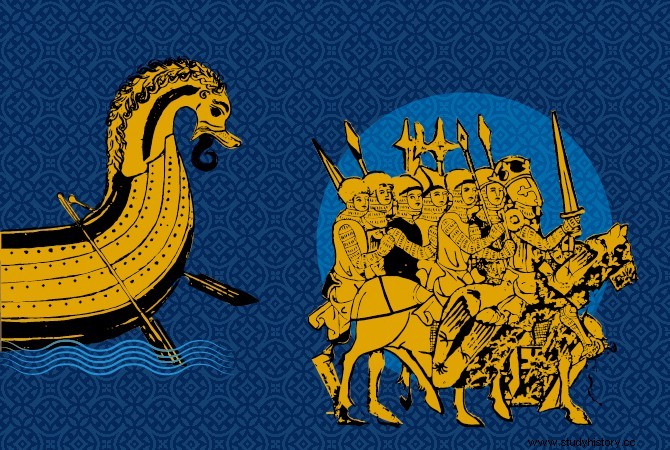
The term witch, feminine of sorcerer, derives from the Vulgar Latin sortiarius , the “spell-teller”. In the collective imagination, witchcraft is associated with the Middle Ages, women and the pact with the devil, which should be strongly qualified. If the witch hunt does indeed begin in the 15th th century, it ends at the beginning of the 18 th century, so that it is especially the XVII th and XVIII th centuries that have known the most terrible waves of persecution.
In the 13 th and in the XIV th century, there are also many male sorcerers, and if the Sabbath exists, it is far from being the dominant charge before the end of the 15th th century. It is necessary to wait for the beginning of the XIV e century to see papal decisions and treaties condemning witchcraft. In 1326, Pope John XXII fulminated a bull in which we can read:“We learn with pain the iniquity of many men, Christians only in name. They deal with death and pact with hell, for they sacrifice to demons. »
Harm to Christian society
Pyres began to be lit, first on the borders of the Holy Empire and in Dauphiné, from the 1440s. In 1487, two Dominican inquisitors, Heinrich Kramer and Jacob Sprenger, wrote a demonological manual, the Malleus Maleficarum (Hammer of Witches ). Sorcerers and witches are accused of carrying out acts of ritual magic, of invoking demons to heal or to harm Christian society.
At the end of the Middle Ages, we witness a feminization, a popularization and an aging of the typical person practicing witchcraft. In the Dauphiné, among the suspects of witchcraft, women represent 50% before 1415, 70% in the middle of the 15th th century and 90% at the start of the next century. In Lucerne, in present-day Switzerland, 91% of those accused of witchcraft in the trials recorded between 1398 and 1551 were women.
For the most part, they are poor, isolated from their families and increasingly old. The old woman begins to become the archetypal witch. In the eyes of the learned elite and the Church, she is supposed to hold secrets of "good women" forbidden to men. Postmenopausal, it is, according to the theory of humors, cold and dry in nature. No longer able to purify itself through menstruation, it becomes toxic.
